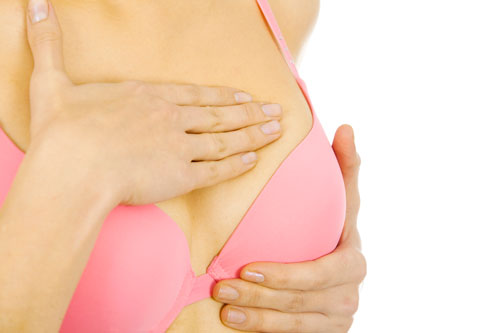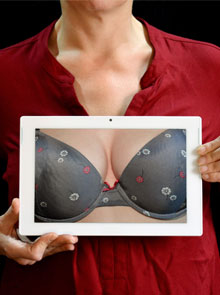Dr Peter Schoub is a diagnostic radiologist with nine years’ experience in the field of breast imaging and has been in private practice since 2010.
Breast Cancer symptoms to look out for
Dr Peter helps us separate the breast cancer facts from all the myths:
Myth – Mammograms can increase your risk of breast cancer:
While radiation in large enough doses is ‘carcinogenic’ (cancer-causing), the amount used by mammography is so small that the associated risk of someone developing breast cancer, as a result, is a minuscule one in 70 000 chance, whereas your lifetime risk of getting breast cancer, with or without having mammograms, is one in eight.
Mammograms, in fact, save lives because they allow doctors to detect breast cancers at the earliest possible stage, before they may have even begun to show symptoms. Most tumours are detected when they are less than 2cm in size and the prognosis for patients is then a very positive 90% five-year survival rate after diagnosis.

Fact – Women with breast implants can still have mammograms:
Having a mammogram, although it does compress the breasts a bit, will not burst or displace the implants, and women who’ve had a breast augmentation should follow the screening guidelines like everyone else.
Be sure to tell your radiologist if you have implants, because they can block views of the breast tissue. He or she will then just position you slightly differently and take a few more images to ensure that all the tissue can be seen.
Myth – Only women over 40 need to go for routine screening:
Breast cancer is most commonly seen in women over 40, but we do see breast cancers in patients in their 30s and uncommonly in their 20s. Women with a family history of breast cancer are more at risk, so while Department of Health guidelines recommends yearly screening for all women over 40, women with a higher risk should start having ultrasounds or MRIs from the age of 30 and mammograms from 35 onwards.
This gives doctors the chance to catch cancers when they are small and haven’t yet had time to spread. But vigilance is important in women of all ages! Make sure you do regular self-examinations at home, where you check your breasts for any changes, such as lumps or thickenings. If you do notice anything unusual, have it checked-out by your GP.
Here’s how you can help reduce the risk of breast cancer:
Fact – Most breast lumps aren’t cancerous:
Around 80% of breast lumps are benign (caused by non-cancerous, harmless changes). The most common are: fibroadenomas – small tumours made up of fibrous and glandular tissues, and common in teenagers and young women; cysts – fluid-filled bubbles; and lumpy breast tissue – glands and connective tissue form a non-uniform layer with some areas thicker (lumpier) than others, which can be influenced by weight-loss and hormonal changes caused by your menstrual cycle, contraceptives, HRTs or even stress. Even though most lumps are not cancers, feeling a lump is still the single most important indicator of breast cancer, so never ignore one!
Myth – Wearing antiperspirant can cause breast cancer:
Firstly, there is no evidence to prove that the chemicals in antiperspirants are carcinogenic. Secondly, it has been suggested that antiperspirants prevent your body from sweating out toxins, which then accumulate in the lymph nodes under your arms and can lead to breast cancer – this is untrue.
While the underarms and breasts are connected by the lymphatic drainage system, the lymph nodes are responsible for draining lymph fluid from the breast tissue and filtering out unwanted substances, which is a one-way process, so any toxins in the lymph nodes cannot drain into the breasts.

Fact – Fertility treatment doesn’t increase breast cancer risk:
A 21-year-long Dutch study of 25 000 women, the findings of which were published this year, found that participants who had received fertility treatment had no greater risk of breast cancer than the average woman who hadn’t.
For a long time though, the evidence wasn’t strong either way. Women with a strong family history of breast cancer or who test positive for either the BRCA1 or BRCA2 breast cancer susceptibility genes should still carefully assess their options before going on a fertility treatment. And all women going ahead with treatment should be screened before and during the process. If you suspect you may be pregnant you won’t be able to have a mammogram, but ultrasounds are perfectly safe.
JOIN US! Find out how you can participate in the Avon Justine IThemba Walkathon:
http://www.womanandhomemagazine.co.za/newsandentertainment/avon-ithemba-walkathon-2016

